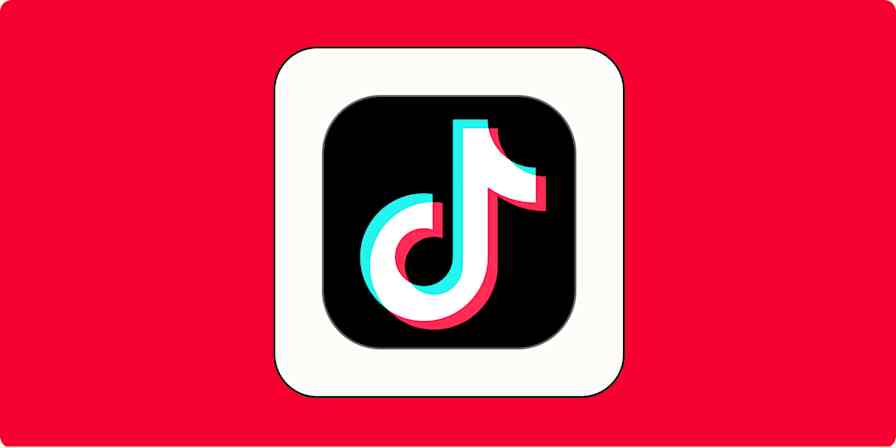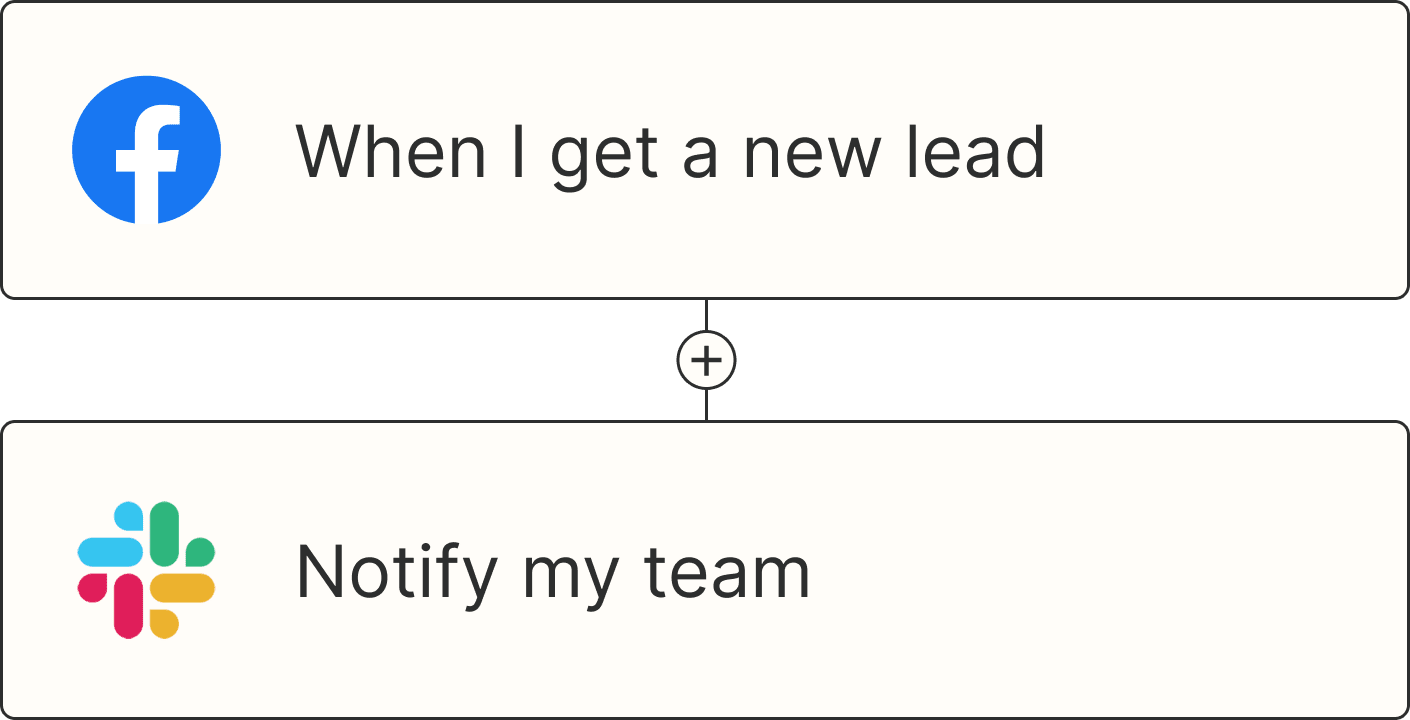The social media creator economy is expected to top half a trillion dollars by 2027. That leaves at least a million for you after my dog finally gets the Instagram stardom she deserves.
If you're tempted to turn your casual social profile into a consistent income source, be warned: it's not as easy as your favorite influencers make it seem. Standing out, staying organized, and avoiding burnout all take the right mix of strategy and creativity. But that doesn't mean it's not doable.
In this guide, I'll walk you through what it really takes to become a social media influencer, including the foundational steps, tools that help you scale, and ways to build sustainable momentum. And if you're looking for your first paid partnership, Zapier's Creator Program is a great place to start. You'll earn commissions for sharing the tools you already use—and get support turning your know-how into high-impact content.
Table of contents:
What is a social media influencer?
A social media influencer is someone who builds trust and connection with an audience online—and then leverages that influence to drive action. That action could be as simple as a like or a comment, or as high-stakes as purchasing a product, signing up for a service, or following a brand.
Influencers exist across every niche and platform. Some have massive followings and broad appeal (think YouTube personalities or TikTok stars), while others carve out smaller, loyal communities in specific spaces—from fitness and finance to productivity tools and parenting hacks. These "micro" or "nano" influencers may have fewer followers, but they often have more engaged ones, which can make them even more valuable to brands. Zapier's Creator program, for example, isn't looking for folks with millions of followers—we're looking for people who love Zapier and know how to express it in a way that can make others love it too.
What sets influencers apart from casual users is their consistency and a sense of authority or authenticity in their space. The best influencers bring something meaningful to the table, whether they're teaching, entertaining, or inspiring. And their audience keeps showing up for it.
How to become a social media influencer in 9 steps
You don't need to be famous to be an influencer—you just need to offer value, show up regularly, and build trust with your audience over time. Here's how to get started.
1. Understand what being an influencer really means
The most successful creators don't just post at random with the vague goal of racking up followers. They build mini media brands around their personality, skills, or niche.
Before you get caught up in camera gear or analytics, take time to define what kind of influencer you want to be. Most fall into one (or more) of these categories:
Educators: You teach something useful—like how to automate tasks with Zapier, improve your writing workflow, or build a custom Notion dashboard.
Entertainers: You make people laugh, feel inspired, or just want to watch more. Your content might be lifestyle-focused or use storytelling to show off your personality.
Explainers: You break things down in a way that clicks—whether it's tech tools, productivity hacks, or the latest industry trends.
No matter your style, the key is to offer something people can come back for. So before you hit "record" or draft your next post, ask yourself:
What do I love talking about—and what do people ask me for help with?
Who would genuinely benefit from my point of view?
What's my why for posting (beyond going viral)?
Every creator starts here. And answering these questions now will give your content more purpose and staying power later.
2. Pick a niche—then go deeper
One of the biggest traps new creators fall into is trying to talk to everyone. But the creators who grow the fastest aren't chasing trends, but owning a niche.
Think of your niche as the lens you'll use to show up online. It doesn't have to be a topic; it could be a unique angle or the audience you serve. Here's what that looks like in practice:
Instead of just "tech," go with AI productivity tools for enterprises
Instead of just "entrepreneurship," try business tips for small law firms
Instead of "apps," focus on how to use automation tools to unlock new opportunities
When you're starting out, clarity beats variety. Your niche gives people a reason to follow you—and a reason to stay. Once you've built trust and an audience that understands what you're about, you can branch out naturally (and bring your followers with you).
Don't be afraid to get specific. It's the fastest way to stand out.
3. Create consistent, quality content (without burning out)
Most creators don't fail because they lack creativity—they burn out because they don't have systems. Consistency is what separates the hobbyists from the pros.
Viral moments might spark attention, but steady, valuable content is what builds a loyal audience over time. Here's how to stay consistent without sacrificing your sanity:
Brainstorm in batches. Set aside one session to generate 10+ content ideas at once. You'll spend less time stuck in "what should I post?" mode and more time executing.
Batch your filming. Record several videos in one sitting. A quick outfit change or shift in background can make each video feel fresh while maximizing your energy and setup time.
Automate everything you can. Use Zapier to do things like moving raw footage from Google Drive to your editing tool, auto-scheduling posts, and cross-sharing to multiple social channels. Learn more about how to automate your social media processes.
Track what matters. Don't just chase likes. Measure things like engagement, watch time, and conversions so you know what's truly resonating—and what to double down on.
Tip: Set up an automated workflow in Zapier that logs each new video's performance data in a Google Sheet. It's a simple way to spot trends and make smarter content decisions without spending hours digging through raw data. Here's a weekly report generator template to get you started.
The more you can streamline your process, the more time you'll have to focus on what actually moves the needle: creating great content.
4. Build your personal brand like a business
If you're serious about becoming a social media influencer, treat it like more than just a creative outlet. Creators who run their brand like a business protect what they're building for the long haul.
Here's what that looks like in practice:
Register a business entity. A formal structure (like an LLC or sole proprietorship) helps with taxes and protects your personal assets.
Open a business bank account. Keep your income and expenses organized—especially if you're landing sponsorships, affiliate deals, or monetizing your content in other ways.
Invest in professional tools. A branded email address (like yourname@brand.com) adds instant credibility when pitching to sponsors. Same goes for having a simple, well-designed website or media kit.
Protect your work. Back up your content regularly and use secure, unique passwords for every platform. You don't want to lose your audience—or your income—over a preventable tech issue.
You don't need to do all of this on day one. But the sooner you start thinking like a creator and a business owner, the easier it is to scale—and stay in control.
Read more: Business startup checklist: Launching a startup
5. Protect yourself with creator insurance
Again, once you start earning money from your content, it's important to think of yourself like a business rather than just a creator. And like any business, you take on risk.
Here's what that risk actually looks like:
A brand sues you for "false claims" in a sponsored video
You unknowingly use copyrighted music or clips
A viewer claims financial loss from advice you shared
A hacker locks you out of your TikTok or YouTube account
These aren't edge cases—they're real scenarios creators face every day. Creator insurance (also called cyber and media liability insurance) can help protect you from the risks of running an online business. It's designed to help cover things like:
Digital media liability: Legal costs for things like copyright issues, defamation, or brand disputes
Cyber liability: Protection against hacks, data breaches, ransomware, and recovery costs
Business interruption coverage: Income loss after a cyber incident
Hardware protection (bricking): In case malware wipes out your device completely
If you're a content creator, videographer, or freelance marketer, policies can start around $75/month, with instant quotes available through platforms like Insura.ai. That modest investment can protect your content, your reputation, and your ability to land serious brand partnerships.
6. Monetize strategically with brand deals, affiliates, and products
Once you've built a steady stream of content and put basic protections in place, it's time to turn that effort into income. Most creators use a mix of the following monetization strategies:
Brand sponsorships: Collaborate with companies that align with your niche. You'll get paid to feature or review their products in your content—from quick shoutouts to fully integrated videos.
Affiliate marketing: Share tracked links to tools, platforms, or products you already use and love. When someone buys through your link, you earn a commission.
Digital products: Package your knowledge into templates, guides, online courses, or coaching services.
Platform monetization: Tap into built-in revenue options like YouTube AdSense, TikTok Pulse, Instagram bonuses, or LinkedIn Creator Mode (depending on your audience and platform).
Tip: Start simple by joining affiliate programs for tools you already use and can naturally recommend or showcase inside your content. It's one of the easiest (and most authentic) ways to start earning without changing your content strategy.
The key to monetizing sustainably is to pick the right revenue stream(s) for your niche, audience, and energy level. Then, scale from there.
7. Learn from what's working (and iterate fast)
Once you're publishing consistently, it's tempting to stay in output mode: create, post, repeat. But the creators who grow the fastest are both consistent and analytical. They track what works, learn from it, and pivot quickly.
Here's what to pay attention to:
What drives real action: Which videos actually lead to click-throughs, signups, or sales?
Format performance: Are tutorials outperforming reaction videos? Are product demos keeping viewers engaged longer?
Search-friendly content: Which topics rank in YouTube or Google Search and keep bringing in views over time?
Once you spot a pattern, lean into it. Optimizing your content is how you build a brand that grows with you.
8. Avoid the common pitfalls new creators make
Every creator stumbles early on; it's part of the process. But if you know what to watch for, you can avoid the most common mistakes and keep your momentum going. Here are a few mistakes to watch for, and what to do instead.
Mistake | How to avoid it |
|---|---|
Posting inconsistently | Schedule your uploads with a content calendar |
Ignoring SEO | Use descriptive titles, tags, and transcripts |
Neglecting legal protection | Get a basic media liability policy |
Over-relying on one platform | Repurpose your content across YouTube Shorts, TikTok, and Instagram Reels |
Not diversifying income | Mix affiliate, sponsorship, and digital product revenue |
Forgetting to back up content | Set up cloud automations for every upload |
Growing fast is great, but building smart is better. Setting up small systems now will save you huge headaches in the long run.
9. Use AI appropriately
Social media content creation is evolving fast, and the creators who thrive will be the ones who work with AI rather than against it. I'd never recommend churning out AI slop just to engagement farm, but there are still ways you can use AI to create better social media content and optimize your business for success.
For instance, AI can help with tasks like:
Automating research and admin so you can spend more time creating
Brainstorming content ideas to help you keep the creative juices flowing
Repurposing your content across social media channels
Even if you're a team of one, you can use AI and automation to create more impact with less effort. Here are a few templates to help you get started.
Submit content ideas and have OpenAI generate additional and related ideas automatically.
Repurpose existing content with a list of digital marketing ideas, powered by OpenAI.
Create high-quality content effortlessly with this chatbot, powered by OpenAI.
Serious about being an influencer? Join the Zapier Creator program
If you're looking for your first (or next) brand partnership, the Zapier Creator Program is built for creators like you—educators, tech explainers, productivity nerds, and automation lovers who genuinely enjoy helping others work smarter.
Here's what makes it different:
Earn commissions and sponsored payments based on your audience size, performance, and signups.
Get featured on Zapier's site, social channels, and in community spotlights.
Access early previews and creative briefs for new Zapier features and AI tools.
Collaborate directly with Zapier's marketing team on campaigns, webinars, and content with our 8,000+ app partners.
You don't need millions of followers to make an impact. Whether you're a micro-influencer or a full-time creator, what matters most is your voice, your perspective, and your ability to help people do more with the tools they already use.
If you're already sharing how-tos, tech tips, or creative workflows, this is your chance to turn that knowledge into both income and visibility. Apply to join the Zapier Creator Program today.
Related reading:








